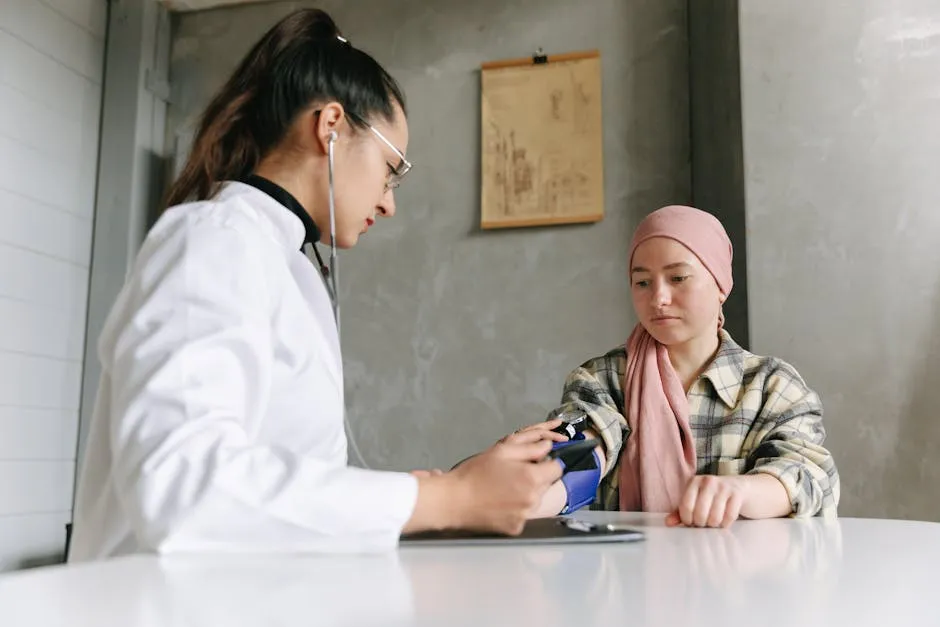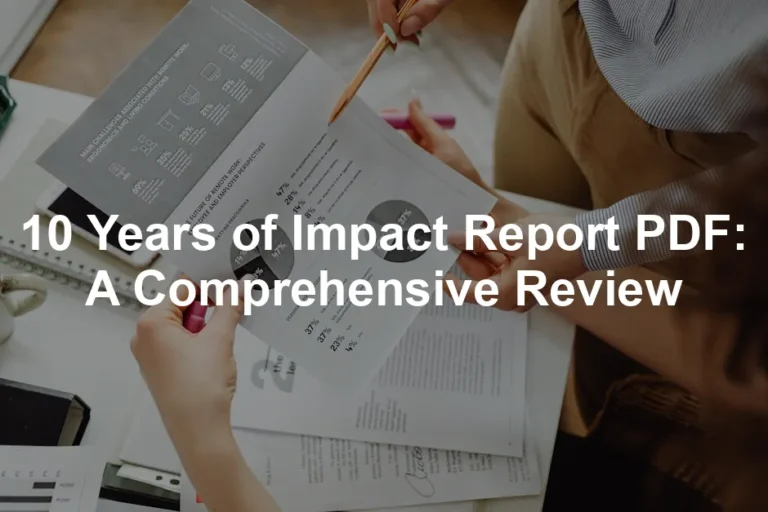Introduction
In the grand arena of research and medicine, two terms often steal the spotlight: statistical significance and clinical significance. While both terms sound similar, they serve distinct roles in interpreting research outcomes. Statistical significance answers the question, “Did the observed effect occur by chance?” Meanwhile, clinical significance asks, “Does this effect matter in real-world applications?”
Understanding both concepts is crucial for researchers, clinicians, and patients alike. Imagine a medication that reduces symptoms statistically but fails to enhance patients’ quality of life. That’s a scenario where statistical significance shines while clinical significance hides in the shadows.
The importance of these distinctions cannot be overstated. They impact not only research interpretations but also treatment decisions. For instance, a statistically significant result may prompt further investigation, yet without clinical significance, it could lead to unnecessary treatments or interventions that don’t benefit patients.
This article aims to shed light on the differences, implications, and applications of statistical and clinical significance. We will explore what each term means, how they are assessed, and why they matter in the realm of healthcare and research. By the end, you’ll be equipped to navigate these concepts confidently, ensuring that both statistical rigor and clinical relevance guide your understanding of research findings.

The Basics of Statistical Significance
Definition of Statistical Significance
Statistical significance is a cornerstone of hypothesis testing in research. It indicates whether the observed results are likely due to chance or if they reflect a true effect. A common threshold for determining statistical significance is the p-value, typically set at 0.05. This means there’s a 5% probability that the results happened by mere chance.
When researchers find a statistically significant result, it suggests that the observed effect is unlikely to be a fluke. However, this doesn’t automatically mean the effect is meaningful in a clinical context. It merely implies that there’s enough evidence to reject the null hypothesis—a statement suggesting no difference or effect.
Understanding P-Values
P-values are the unsung heroes of statistical analysis. They quantify the probability of observing data as extreme as, or more extreme than, what was actually observed, assuming the null hypothesis is true. A p-value less than 0.05 typically indicates statistical significance, suggesting that the findings warrant further consideration.
However, p-values aren’t perfect. They can be misinterpreted. For instance, a p-value of 0.04 doesn’t mean there’s a 96% chance the results are true. It simply reflects the probability of the observed result under the null hypothesis. Moreover, a low p-value can sometimes arise from large sample sizes, leading to statistically significant findings that are not clinically meaningful.
For example, a study examining a new diabetes medication might report a p-value of 0.03, indicating statistical significance. But if the difference in blood sugar levels between the treatment and control group is negligible—say, a 0.1% reduction—clinicians must question the practical importance of this finding. Does a tiny drop in blood sugar really warrant a new treatment? That’s where clinical significance steps in.
To help with these calculations, consider using a P-value calculator. It’s like having a trusty sidekick for your statistical escapades!
In summary, while p-values provide essential information about the reliability of research findings, they should be interpreted carefully. It’s vital to consider not just whether results are statistically significant, but also their relevance in real-world scenarios.

Factors Influencing Statistical Significance
Sample Size
Larger sample sizes can significantly affect statistical significance. Think of it this way: the bigger the crowd, the louder the cheer! When you have a larger group, the data becomes more reliable. Small sample sizes may lead to random variations, making it hard to discern real effects. In contrast, a large sample can reduce this error and reveal true patterns. So, if you want to shout about a finding, make sure your sample is big enough to carry the tune!
Effect Size
Effect size is like the volume knob of your research findings. A small effect size means the difference between groups is minimal. Conversely, a large effect size screams, “Hey, look at me!” Statistical significance often hinges on effect size; significant results usually accompany larger effects. To put it simply, if the difference is substantial, it’s more likely to be deemed statistically significant. So, when analyzing results, don’t just look for p-values—consider how big the effect is!
Variability
Variability is the wild card in any data set. High variability can obscure potential differences, making it harder to achieve statistical significance. Imagine a group of cats: if they all behave similarly, it’s easier to spot differences. But if each cat acts differently, good luck finding a trend! When data is scattered, it can inflate p-values and mask true effects. Therefore, controlling variability is crucial for obtaining clear results. Keep your data tidy to let the significance shine through!
The Concept of Clinical Significance
Definition of Clinical Significance
Clinical significance refers to the real-world importance of research findings in medicine. It’s not just about statistical outcomes; it’s about their impact on patient care. While statistical significance answers whether results are unlikely due to chance, clinical significance asks, “Does this finding matter for patients?” For instance, a medication might show a statistically significant reduction in symptoms, but if that reduction doesn’t improve a patient’s quality of life, it’s clinically irrelevant. Understanding clinical significance ensures that research translates into meaningful improvements in patient care.

For a deeper understanding of how statistical significance differs from clinical significance, check out this article on statistical vs clinical significance.
Assessing Clinical Significance
One of the key metrics in assessing clinical significance is the Minimal Clinically Important Difference (MCID). This is the smallest change in a treatment outcome that would lead a doctor to alter patient management. Think of it as the “magic number” that can sway treatment decisions. For example, if a new pain medication reduces pain scores by two points on a scale of 1 to 10, this could be considered clinically significant. However, if it only reduces pain by half a point, it might not be enough to justify its use.
Determining clinical significance involves evaluating practical relevance and patient outcomes. It’s crucial to consider factors such as the duration of effects, patient acceptability, and cost-effectiveness. Real-world examples abound in various medical fields. For instance, in cardiovascular health, a drug that lowers blood pressure by a statistically significant amount might not be deemed clinically significant if the reduction does not lead to fewer heart attacks or strokes.

If you’re looking for in-depth insights into medical practices and guidelines, consider investing in a Clinical practice guidelines book. It’s a great resource for clinicians navigating the complexities of patient care!
Real-World Examples of Assessing Clinical Significance
In oncology, a study might find that a new therapy improves survival rates in cancer patients. However, if the increase is only a few weeks, clinicians need to weigh the treatment’s benefits against its side effects and costs. Similarly, in mental health, a therapy might yield statistically significant results in reducing depression scores, but if patients don’t feel a meaningful change in their day-to-day lives, the results may lack clinical significance. These examples emphasize the need to look beyond numbers and evaluate the true impact of findings on patient care.

Importance of Clinical Relevance
Understanding both statistical and clinical significance is essential for clinicians. They must evaluate not only whether results are statistically significant but also if these results have real-world implications. Statistical significance tells us if a result is likely due to chance. However, it doesn’t address whether that result has any meaningful impact on patient care.
Clinical significance, on the other hand, focuses on practical outcomes. It assesses whether the changes observed in a study truly matter to patients. For instance, if a new medication shows a statistically significant reduction in symptoms, it’s a big deal. But if that reduction is so small it doesn’t affect quality of life, then what’s the point?
This distinction can directly impact treatment decisions. Clinicians rely on clinical significance to determine if a treatment is worth pursuing. If a new therapy improves a patient’s quality of life or health outcomes, it can lead to a change in practice. Conversely, if the clinical significance is minimal, clinicians might decide to stick with existing treatments that offer real benefits.
In summary, assessing both statistical and clinical significance is crucial for effective patient care. It enables clinicians to make informed decisions that genuinely benefit their patients.

Statistical vs Clinical Significance: Key Differences
Comparison Chart
| Feature | Statistical Significance | Clinical Significance |
|——————————-|———————————————————–|———————————————————–|
| Definition | Indicates if results are likely due to chance | Assesses the real-world importance of results |
| Measurement | Typically via p-values (e.g., p < 0.05) | Involves practical relevance and effect size |
| Focus | Reliability of findings | Impact on patient care and outcomes |
| Interpretation | Can indicate a statistically significant effect | Determines if the effect is meaningful to patients |
| Example | A medication reduces symptoms with p = 0.03 | If the reduction in symptoms is substantial enough to matter|

Misinterpretations and Misapplications
A common pitfall in interpreting statistical significance is equating it with clinical importance. Just because a result is statistically significant doesn’t mean it translates into a meaningful impact on patient care. For example, in a study assessing a new antidepressant, researchers found a statistically significant improvement in symptoms. However, the improvement was so minor that it wouldn’t change how patients felt day-to-day. Thus, while the p-value indicated significance, the clinical relevance was negligible.
Another example can be found in cancer treatment studies. A trial may show that a new therapy increases median survival rates by a few days or weeks. Statistically, this result might be significant. However, if the side effects and costs are substantial, the treatment may not be clinically significant. Patients often care more about quality of life than marginal gains in survival.
Researchers must avoid misinterpreting statistical significance. It’s critical to look beyond p-values and assess the actual impact on patients. A thorough understanding of both statistical and clinical significance ensures that treatments are not only effective on paper but also meaningful in practice.

The Role of Context
Context plays a vital role in interpreting research findings. It shapes how we perceive statistical and clinical significance. For instance, a study might report a statistically significant result, but without understanding the context, we risk misinterpretation. Let’s say a new medication shows a significant p-value. But what does that really mean for patients? Context matters!
Consider a clinical trial for a new drug. If the study is conducted in a small, homogenous group, the findings might not apply to the wider population. The setting, patient demographics, and condition severity can all influence results. Thus, researchers must provide context to ensure that their findings make sense within the real-world framework.
In clinical practice, judgment is key. Clinicians must weigh statistical findings against patient values. For instance, a slight improvement in a patient’s health might be statistically significant. However, if that improvement doesn’t align with what the patient finds meaningful or valuable, it may not be clinically significant. It’s essential for clinicians to consider their patients’ preferences, goals, and overall well-being when making treatment decisions.

Best Practices for Researchers and Clinicians
Guidelines for Interpretation
For researchers, clarity is crucial when reporting significance. Always report both statistical and clinical significance. It’s not just about p-values; report effect sizes too. Effect size tells us how meaningful the findings are, which is essential for understanding practical implications.
Transparency is vital. When presenting results, include p-values along with confidence intervals. This practice helps others gauge the reliability of your findings. Remember, a p-value alone doesn’t tell the whole story. It’s like presenting a movie summary without revealing the plot twist—where’s the fun in that?
Additionally, researchers should avoid cherry-picking results. Present all relevant data, even if it doesn’t support your hypothesis. This honesty fosters trust and encourages a culture of integrity in research.

Recommendations for Clinical Practice
Clinicians must be savvy consumers of research. When assessing studies, look beyond statistical significance. Ask yourself, “Is this clinically relevant?” A result may be statistically significant, but if it doesn’t translate into meaningful patient outcomes, it’s not worth the hype.
Engaging with research findings requires collaboration. Researchers and clinicians should work together. This partnership enhances understanding and application of findings in real-world settings. Clinicians can provide invaluable insights into patient needs, while researchers can offer cutting-edge data. Together, they can bridge the gap between statistical outcomes and clinical relevance.
Encourage discussions about research findings among healthcare teams. Regularly sharing knowledge helps everyone stay informed and improves patient care. By promoting dialogue, we can ensure that research translates into meaningful practice, ultimately benefiting patients.
In summary, understanding context, practicing transparency, and fostering collaboration between researchers and clinicians are paramount. This approach not only strengthens the interpretation of statistical and clinical significance but also enhances patient care. After all, it’s all about making research work for real people!

Conclusion
In this journey through statistical and clinical significance, we’ve uncovered essential truths. Statistical significance tells us whether the results of a study are likely due to chance. It’s like the “thumbs up” from data analysis, often marked by a p-value of less than 0.05. But hold your horses! Just because a result is statistically significant doesn’t mean it matters in real life.
On the other hand, clinical significance focuses on the practical implications. It examines whether the results translate into meaningful benefits for patients. For instance, a medication might lower blood pressure significantly, but if the change is only a fraction of a point, does it really improve a patient’s well-being? That’s the million-dollar question!
Understanding both types of significance is vital for researchers and clinicians alike. It ensures that findings are not only rigorous but also relevant. The medical community must prioritize this distinction to avoid misinterpretations that could lead to inadequate treatment options or misguided research directions.
As we wrap up, let’s emphasize the need for ongoing education and open dialogues about these concepts. Workshops, seminars, and collaborative discussions can deepen understanding and improve patient care. After all, knowledge is power, and when it comes to interpreting research, being informed means making better decisions. Let’s keep the conversation going!

FAQs
What is the difference between statistical and clinical significance?
Statistical significance determines if results are likely due to chance, often indicated by a p-value. Clinical significance evaluates whether the results are meaningful in a real-world context, assessing their impact on patient care and outcomes.
Why is clinical significance important in healthcare?
Clinical significance is crucial because it informs treatment decisions. A statistically significant result may not always lead to improved patient care. Understanding clinical significance helps clinicians prioritize interventions that genuinely enhance patient health and quality of life.
Can a result be statistically significant but not clinically significant?
Absolutely! Imagine a study that finds a new treatment reduces symptoms statistically significantly, but the actual reduction is so tiny that it doesn’t affect patients’ daily lives. This scenario illustrates that statistical significance doesn’t always translate to clinical relevance.
How should researchers report statistical and clinical significance?
Researchers should report both statistical and clinical significance in their findings. This includes providing p-values alongside effect sizes and confidence intervals. Clarity is key! Highlighting how results apply to real-world situations can enhance understanding and encourage meaningful application in clinical practice.
Please let us know what you think about our content by leaving a comment down below!
Thank you for reading till here 🙂
If you’re interested in diving deeper into research methodology, check out these Research methodology textbooks that can provide you with a solid foundation!
All images from Pexels




